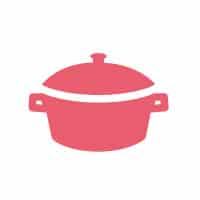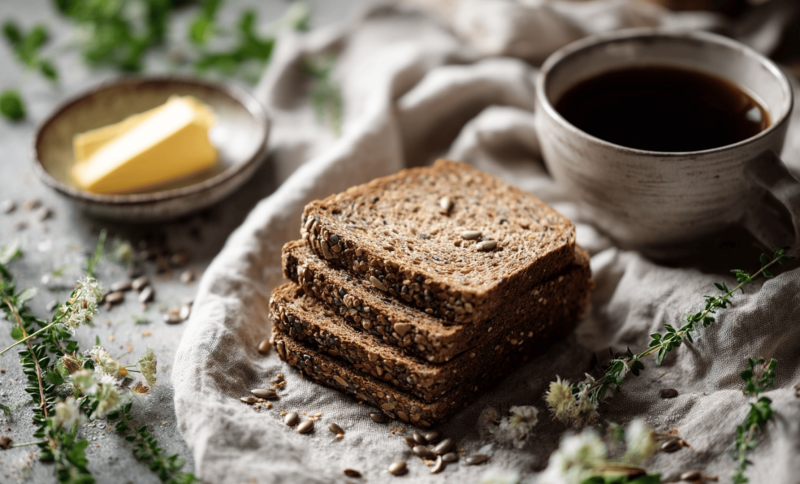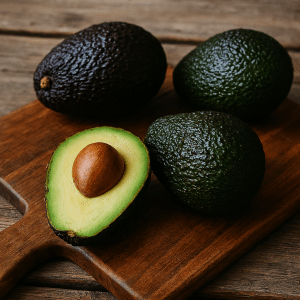Bread has been a staple food across cultures for centuries, but not every loaf offers the same nutritional value.
Among the many varieties available today, rye bread often raises an important question: Is rye bread healthy? And is rye bread good for you?
Known for its dense texture and distinct flavor, rye bread is gaining popularity among health-conscious eaters.
Here we will dive into its nutritional content, potential health benefits, and how it compares with other types of bread in terms of taste and wellness.
By the end, you’ll know if rye bread deserves a place in your daily diet, and even how to bake your own loaf.
What Is Rye Bread?
Rye bread comes from rye grain, which grows well in cooler climates where wheat struggles. Farmers in Northern and Eastern Europe have relied on rye for centuries, making it a traditional ingredient in many regional recipes.
You’ll find rye bread in several common forms. Light rye uses a blend of rye and wheat flour, resulting in a milder flavor.
Dark rye contains more rye flour and often includes ingredients such as molasses or cocoa powder for added color and flavor.
Pumpernickel is the densest variety, made from coarsely ground whole rye berries and baked at low temperatures for hours.
The taste and texture differ significantly from those of wheat bread. Rye has an earthy, slightly tangy flavor that some people describe as bold.
Nutritional Content of Rye Bread
Understanding what’s in your bread helps you make better food choices. Here’s what a typical slice of rye bread contains:
| Nutrient | Amount per 1 Slice (35–40 g) |
|---|---|
| Calories | 80–90 kcal |
| Carbohydrates | 15 g |
| Protein | 3 g |
| Fat | 1 g |
| Fiber | 2 g |
Rye bread combines hearty flavor with meaningful health benefits, making it a smart choice for many diets. Adding it to your meals could be a simple step toward better taste and better nutrition.
Potential Health Benefits of Rye Bread
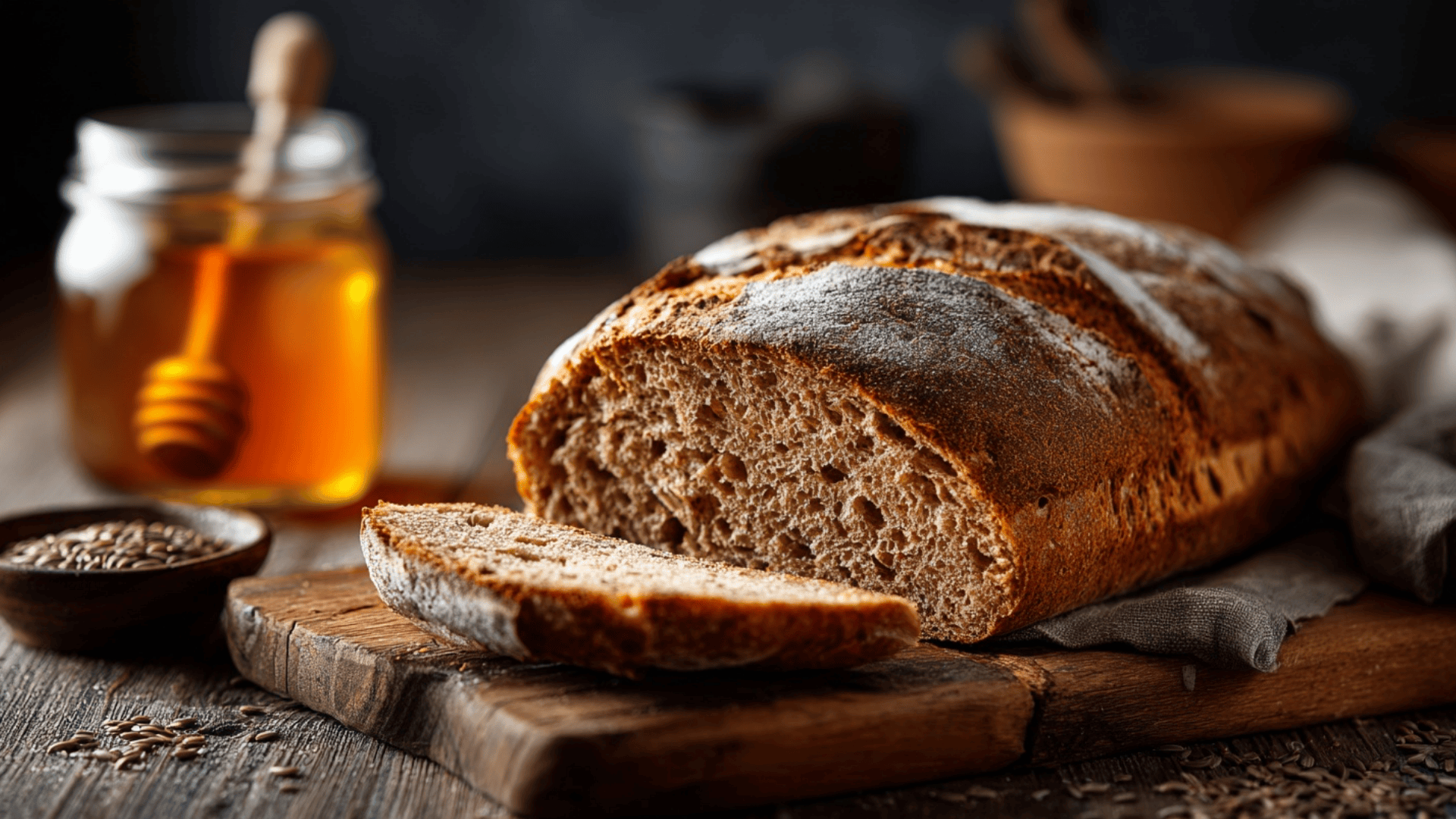
Rye bread isn’t just flavorful; it’s packed with nutrients that can positively impact your well-being. Choosing it over refined breads may offer benefits for digestion, heart health, and overall energy.
1. Digestive Health
The fiber in rye bread promotes regular bowel movements and feeds beneficial gut bacteria. This helps maintain a healthy digestive system and may help reduce discomfort, such as bloating or constipation.
People who struggle with regularity often notice improvements when they add more fiber to their meals.
2. Blood Sugar Management
Rye bread has a lower glycemic index compared to white bread. This means it causes a slower, more gradual rise in blood sugar levels after eating.
For people managing diabetes or trying to avoid energy crashes, this steadier response can make a real difference throughout the day.
3. Heart Health
Research has linked whole grain consumption to improved cardiovascular health. The fiber in rye bread helps reduce LDL cholesterol (the type you want to keep low), while other compounds in whole rye may support healthy blood pressure.
Eating whole-grain bread regularly as part of a balanced diet supports long-term heart health.
4. Satiety and Weight Management
High fiber foods like rye bread help you feel fuller for longer periods. When you eat a sandwich made with rye instead of white bread, you’re less likely to feel hungry an hour later.
This natural appetite control can support weight management goals without leaving you feeling deprived.
5. Nutrient Density
Beyond fiber, rye bread packs in vitamins and minerals that support energy production and metabolism.
The B vitamins help convert food into fuel, while minerals like magnesium and iron support everything from muscle function to oxygen transport in your blood.
6. Research-Backed Insights
Studies have shown that regular consumption of rye bread can help reduce inflammation markers. It’s also linked to improved insulin sensitivity compared to refined grains.
Some studies also suggest a connection between rye consumption and a reduced risk of type 2 diabetes and certain digestive conditions.
Is Rye Bread Good for Everyone?
Rye bread offers numerous benefits, but it may not be suitable for every individual. Here’s a quick breakdown of who should include it and who might need caution:
-
Who Benefits Most – Ideal for those improving digestion, managing weight, balancing blood sugar, or boosting heart health with extra fiber and whole grains.
-
Who Should Be Cautious – Not suitable for people with celiac disease, gluten intolerance, or rye allergies, as it may trigger digestive issues or immune responses.
-
Refined vs. Whole Rye Bread – Whole rye retains fiber and nutrients, while refined rye loses much of its health value. Always check labels.
-
Try Mindfully – If you’re new to rye bread and have grain sensitivities, start with a small amount to monitor how your body reacts.
In summary, rye bread can be a nourishing choice for many, but it’s important to choose whole-grain varieties and listen to your body’s needs.
How to Choose the Healthiest Rye Bread at the Store
With so many bread options lining the shelves, finding the healthiest rye bread can feel tricky. A few smart label checks will help you pick the best loaf for your health.
- Read the Ingredient List – Choose breads with “100% whole rye” or “whole grain rye flour” as the first ingredient. Avoid those listing “enriched rye flour” or refined grains.
- Watch for Added Sugars – Skip loaves with sugar, corn syrup, or honey high on the ingredient list. A good rye bread should taste naturally earthy and tangy.
- Consider Organic Options – Organic rye avoids synthetic pesticides and fertilizers, offering a cleaner choice for those who are mindful of their food sources.
- Try Sourdough Rye – Fermentation increases digestibility and nutrient absorption, while adding a tangy flavor with a lower glycemic impact.
- Check the Fiber Content – Look for at least 2g of fiber per slice, ideally 3g or more, for better digestion and satiety.
By checking labels and choosing whole, fiber-rich, and minimally sweetened loaves, you can ensure your rye bread is as nutritious as it is delicious.
Rye Bread vs. Other Popular Breads
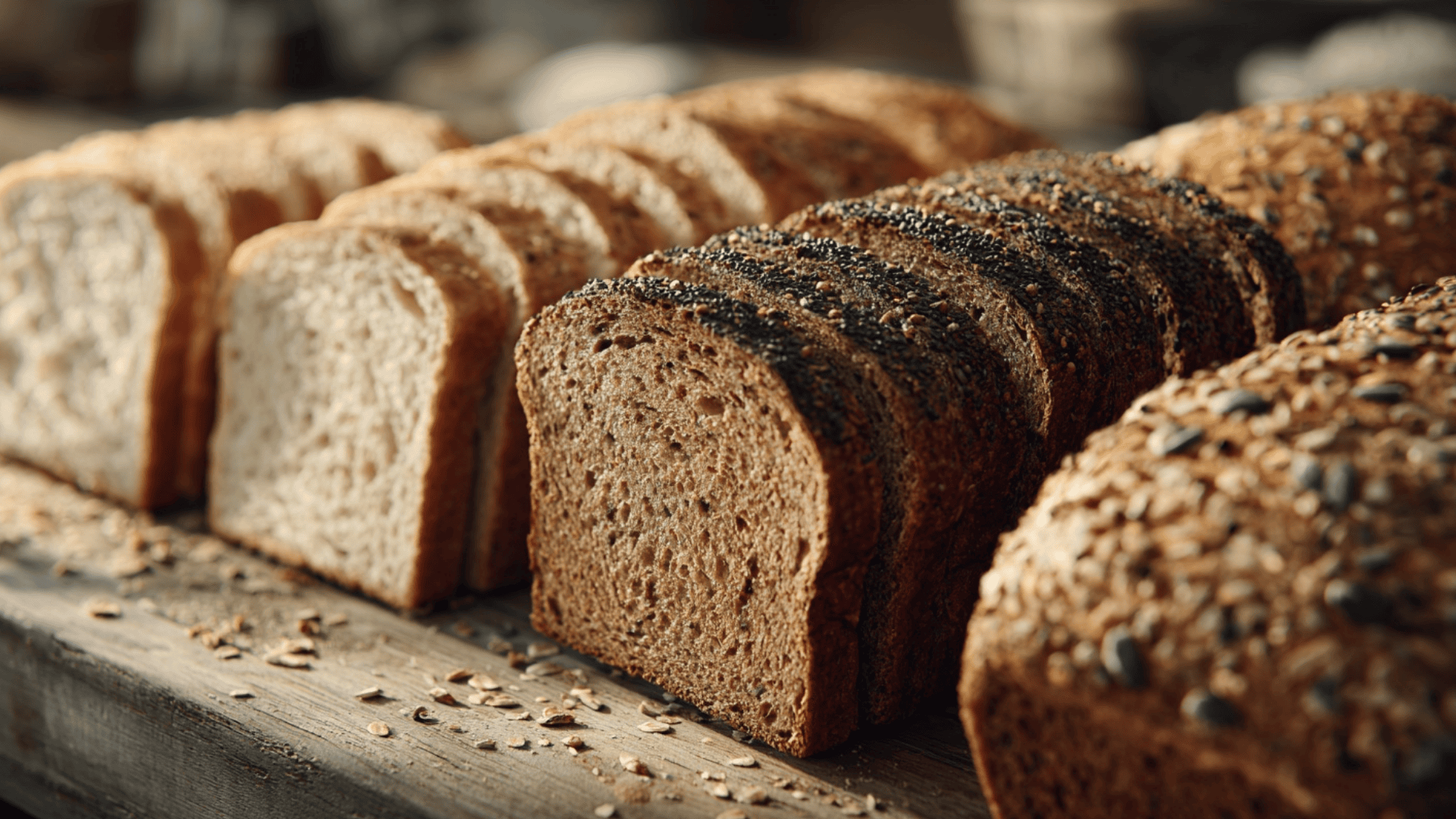
Rye bread stands out for its dense texture and rich nutrition. Let’s compare it to white, whole wheat, and multigrain bread in health and taste.
1. Rye vs. White Bread
Health Benefits:
- White bread typically uses refined flour, which removes most of the fiber and nutrients.
- Causes quicker blood sugar spikes.
- Rye has about 2g fiber per slice (vs
Taste Preference:
- White bread is soft, fluffy, and mild in flavor.
- Rye is denser with an earthy, tangy taste—better suited for hearty sandwiches.
2. Rye vs. Whole Wheat Bread
Health Benefits:
- Both are rich in fiber and whole-grain nutrients.
- Rye contains more soluble fiber, supporting cholesterol management.
- Whole wheat provides similar nutrition but with slightly different fiber composition.
Taste Preference:
- Whole wheat has a milder, nutty flavor that’s classic.
- Rye tastes stronger, tangier, and pairs well with bold toppings like smoked meats and cheeses.
3. Rye vs. Multigrain Bread
Health Benefits:
- Multigrain can be healthy, but only if whole grains are used. Many loaves still rely on refined flours.
- Rye delivers dense, concentrated nutrition per slice.
- The benefits of Multigrain vary widely depending on the ingredients.
Taste Preference:
- Multigrain tends to be nutty and varied in texture.
- Rye has a consistent, dense bite and a distinctive, tangy taste.
In the end, rye bread often provides more fiber, nutrients, and unique flavor than many common loaves. Your choice ultimately comes down to your health goals and personal taste.
Simple Rye Bread Recipe
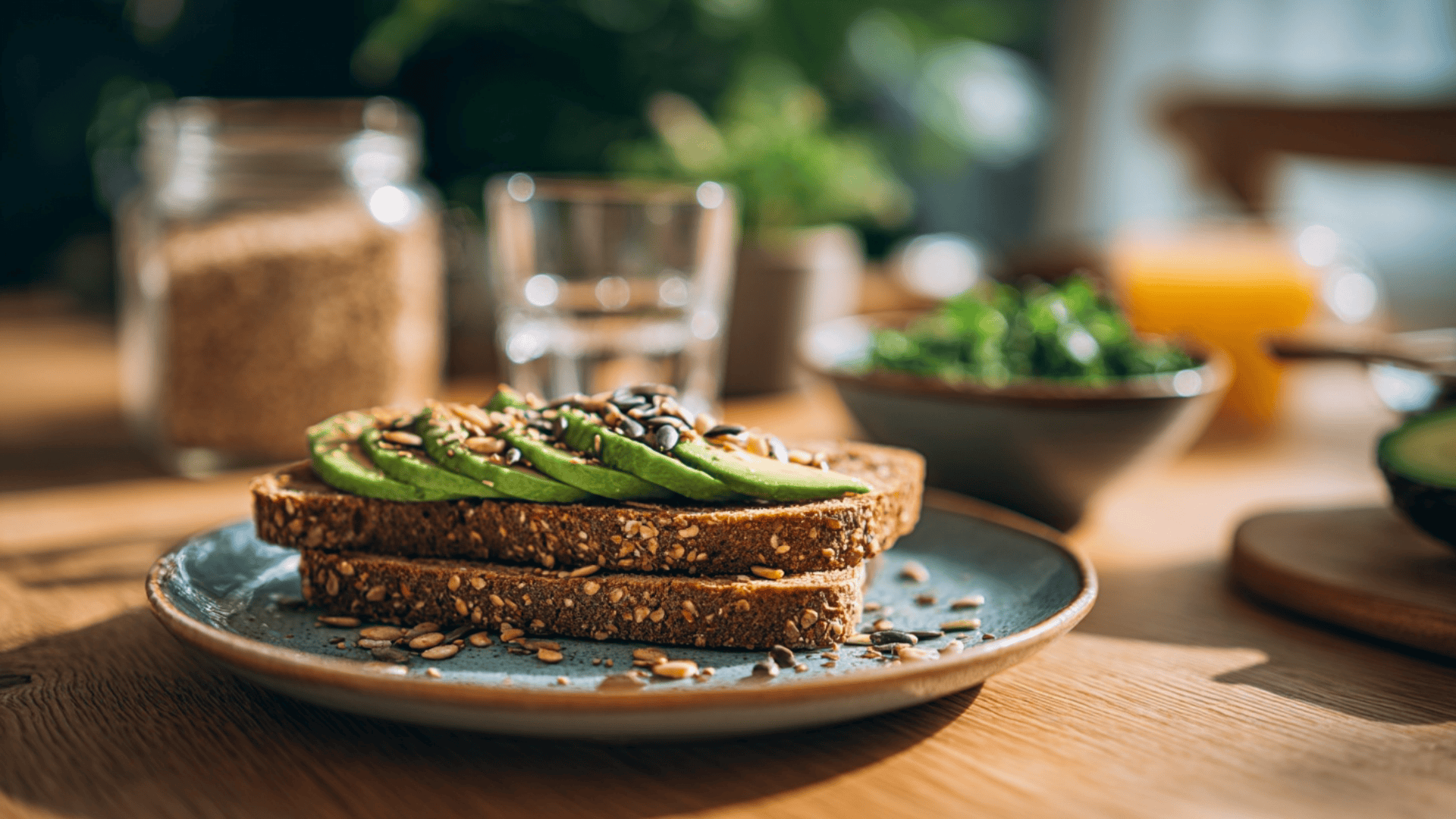
Making your own rye bread at home is easier than you might think. This straightforward recipe produces a hearty loaf perfect for sandwiches or toast.
Ingredients You Will Need
|
Instructions
-
Activate Yeast – Mix warm water, honey, and yeast in a bowl; let sit 5 minutes until foamy.
-
Make Dough – Add rye flour, whole wheat flour, salt, and seeds (if using). Stir until sticky dough forms.
-
Knead & Rise – Knead on a floured surface for 8–10 minutes. Place in an oiled bowl, cover, and let rise 1–1½ hours.
-
Shape & Second Rise – Punch down, shape into a loaf, place in a greased pan, and let rise 45–60 minutes.
-
Bake & Cool – Bake at 375°F for 35–40 minutes until golden and hollow-sounding. Cool completely before slicing.
Final Thoughts
Rye bread is more than just an alternative loaf. It’s rich in fiber, packed with nutrients, and offers a unique flavor that stands out from ordinary sandwich bread.
So, is rye bread healthy, and is rye bread good for you? For most people, the answer is yes. It provides real benefits for digestion, heart health, and appetite control compared to refined breads.
Next time you’re choosing bread at the store or planning your weekly meals, consider giving rye a try. You might find its hearty goodness and satisfying texture make it a new favorite.
And if you’re feeling daring, baking your own loaf brings the fresh aroma of homemade bread right into your kitchen.



